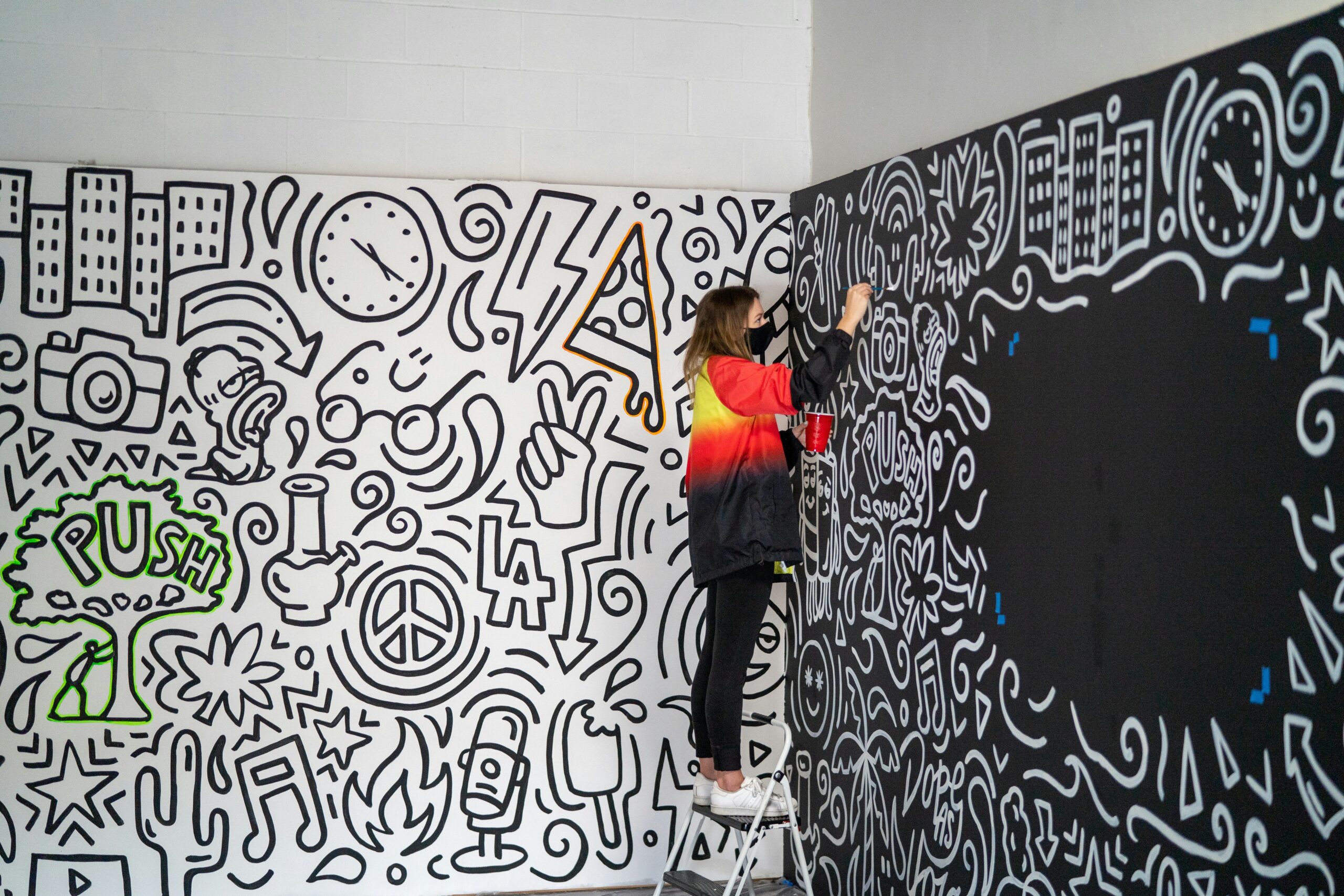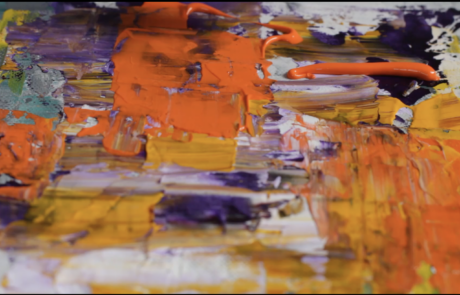
Selling art online isn’t just about displaying beautiful pieces—it’s about creating a seamless and engaging shopping experience that converts visitors into buyers. A well-optimized eCommerce website can help artists showcase their work, build credibility, and drive more sales. However, to stand out in the crowded digital marketplace, your website must include essential features that enhance user experience, build trust, and streamline the buying process. Let’s explore the top features every artist’s eCommerce website should have.

A Visually Appealing & User-Friendly Design
“Your website should be as visually stunning as your artwork.”
First impressions matter, especially in the art world. A clean and professional layout ensures that your artwork takes center stage without unnecessary distractions. Your website should reflect your artistic brand while remaining easy to navigate.
Key Considerations:
- Minimalist design: A clutter-free look keeps visitors focused on your art.
- Easy navigation: Clearly labeled menus, a search function, and well-organized categories help visitors find what they need quickly.
- Mobile optimization: Many buyers shop on their phones, so your site should be responsive and look great on all devices.
- An intuitive, visually appealing website increases engagement and encourages visitors to stay longer, improving the chances of making a sale.
High-Quality Images & Detailed Product Descriptions
“Buyers want to see and understand your art before making a purchase.”
Unlike in-person galleries, online buyers can’t physically interact with your art. That’s why high-quality images and well-crafted descriptions are essential for conveying the true essence of your work.
How to Optimize Your Listings:
- Use high-resolution images: Clear, well-lit images with zoom functionality allow buyers to examine details.
- Include multiple angles: Showcase your artwork from different perspectives and in context (e.g., framed on a wall).
- Write compelling descriptions: Mention dimensions, materials, techniques, and the story behind each piece.
- By providing a complete visual and descriptive experience, you help buyers feel confident about their purchase decisions.
Secure & Seamless Checkout Process
“A complicated checkout process can turn potential buyers away.”
The fewer obstacles a buyer faces at checkout, the more likely they are to complete their purchase. A streamlined, secure checkout process builds trust and enhances the shopping experience.
Essential Checkout Features:
- Multiple payment options: Accept credit cards, PayPal, Apple Pay, and Buy Now, Pay Later services.
- Guest checkout: Allow buyers to complete purchases without creating an account.
- Security measures: Use SSL certificates and trusted payment gateways to protect customer data.
- A frictionless checkout process reduces cart abandonment and increases completed transactions.

Clear Pricing & Transparent Shipping Information
“Customers appreciate honesty when it comes to costs.”
Surprise fees at checkout can deter buyers. Clearly displaying pricing and shipping details upfront creates a transparent and trustworthy shopping experience.
Best Practices:
- Display total costs, including taxes and shipping, before checkout.
- Offer free or flat-rate shipping if possible.
- Provide estimated delivery times and tracking options.
When customers know exactly what to expect, they are more likely to complete their purchases confidently.
About Page & Artist Story
“People don’t just buy art; they buy the story behind it.”
Your About page is a crucial element of your website because it humanizes your brand and builds a deeper connection with buyers.
What to Include:
- Your artistic journey: Share your background, inspirations, and creative process.
- A personal touch: Include a professional photo and a heartfelt message to your audience.
- Achievements and exhibitions: Highlight your credibility and past successes.
An engaging About page helps establish an emotional bond with potential buyers, increasing their interest in your work.
Blog & Content Marketing
“A blog helps drive traffic and establishes you as an authority in the art world.”
Consistently publishing valuable content improves your website’s SEO and keeps visitors engaged.
Content Ideas:
- Behind-the-scenes insights into your creative process.
- How-to guides on selecting and displaying art.
- Industry trends and exhibition experiences.
A well-maintained blog helps attract organic traffic and establishes trust with potential customers.
Customer Reviews & Testimonials
“Social proof builds trust and encourages new buyers to make a purchase.”
Positive feedback from past buyers reassures potential customers about the quality of your artwork and service.
Ways to Showcase Reviews:
- Display customer testimonials on product pages.
- Encourage buyers to share photos of your art in their spaces.
- Feature video testimonials for added authenticity.
By leveraging social proof, you create a sense of credibility that increases sales.
Social Media Integration
“Make it easy for visitors to connect with you beyond your website.”
Social media plays a vital role in driving traffic and engagement.
Integration Tips:
- Add social media buttons linking to your Instagram, Facebook, and TikTok.
- Enable social sharing for products to boost visibility.
- Embed an Instagram feed to showcase new artwork.
Connecting your website with social platforms helps maintain ongoing engagement with your audience.
Email Newsletter Signup
“Building an email list keeps you connected with your audience.”
An email list allows you to nurture relationships and keep potential buyers informed about new releases and promotions.
Best Practices:
- Offer a discount or freebie for signups.
- Send exclusive content, early access, and personalized recommendations.
- Avoid spamming—focus on value-driven emails.
An effective email marketing strategy can drive repeat sales and brand loyalty.
SEO Optimization for Discoverability
“Your website needs to be found by the right audience.”
Search engine optimization (SEO) ensures that your website ranks well on Google, bringing in organic traffic.
SEO Essentials:
- Use relevant keywords in product descriptions and blog posts.
- Optimize images with alt text and compress them for faster loading.
- Ensure fast website speed for a better user experience.
By implementing SEO best practices, you increase your chances of reaching potential art buyers.
Final Thoughts: Creating a Website That Sells Art Effectively
Your eCommerce website should do more than display your art—it should create an engaging and seamless shopping experience that turns visitors into customers. By incorporating these essential features, you’ll build a professional online store that not only showcases your art but also drives sales and growth.
Q: How often should I post content?
A: Consistency is more important than frequency. Posting 3-4 times per week on social media and once a month for blogs or newsletters is a good starting point.
Q: Do I need a website for content marketing?
A: Yes, a website acts as a home base for your content, providing a professional platform for showcasing your work, blogging, and selling art.
Q: What if I’m not good at writing or making videos?
A: Start with the format that feels most natural. If writing isn’t your strength, focus on visual content like videos and images. Over time, you can explore new formats or outsource content creation.
Q: How do I know if my content marketing is working?
A: Track engagement, website traffic, and sales to gauge effectiveness. If engagement is low, experiment with different content types and posting times.



















